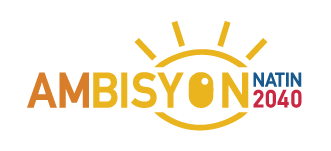Manny Villar (Manila Bulletin)
(First of three parts)
Looking at the discussions — some of them very vicious — in social media, you would think that we are still in the middle of the campaign period. Well, some people seem to have been stuck in that period but the fact is that, the elections are over and our people have given President Rodrigo Roa Duterte the mandate to steer our country in the right direction.
I am glad that the Duterte administration has largely focused on this important task of improving the lives of our people. Recently, the President, through Executive Order No. 27, directed all government agencies, including local government units, to implement the Philippine Development Plan and Public Investment Program of 2017-2022.
The PDP-PIP for 2017-2022 is an important first step towards the realization of AmBisyon Natin 2040, which represents the long-term, collective vision and aspirations of Filipinos for themselves and for the country.
If this is our aspiration as a people then all of us should understand and participate in the program. This is something that government and the public should cooperatively pursue.
In this series of articles, I hope to discuss the importance of this national strategy for development so that we can grasp how this can potentially change the lives of our people and how we can contribute to make it successful.
The Philippines by 2040: Matatag, Maginhawa, at Panatag na Buhay
This is our common ambition for the Philippines. As the PDP states, the dream is that by 2040 “…the country will be a prosperous middle-class society where no one is poor. People live long and healthy lives and are smart and innovative. The Philippines is a high-trust society where families thrive in vibrant, culturally diverse, and resilient communities.”
This is anchored on the belief which I share and work hard for in both my private and public lives: the Filipinos have simple dreams. They want food on their table, education for their kids and a good and secure job so they can attain a bright future for their families.
The study of the National Economic and Development Authority (NEDA) shows that 79.2% of Filipinos want a simple and comfortable life while only 16.9% desires an affluent life, and 3.9% the life of the rich.
NEDA further demonstrates that 7 out of 10 Filipinos want to “earn enough” and provide college education for their children. Six out of ten Filipinos desire to own a car, a medium-sized home and just “enough money for day-to-day needs”.
As a public servant for 21 years and as an entrepreneur practically all my life, this has been the foundation of my belief about the Filipinos. That is why in business, I endeavored to provide Filipinos with decent, low cost housing. That is why in politics, I fiercely waged the “war against poverty” in order to make these simple dreams come true for our people.
I am glad that the Duterte administration has embraced this vision. I am glad that we are finally putting the full force of government towards the realization of this end.
Whatever your political affiliation is; whatever you wrote in the ballot last May 2016, I believe that we can all be reasonable and agree that this is a dream we can all support. I shudder to think that there is one person who truly loves his country who would oppose the realization of the Filipino dream.
But the pessimists among the public might say, “Okay, I support the aspiration, I support the dream, but how do we achieve it?” The cynics among us might be prompted us to ask: “Hindi ba pangako na naman iyan na hindi lalaon ay mapapako din?”
Yes, it is a dream. Bakit? Bawal na ba ang mangarap? But I understand the skepticism. This is not the first time an administration has unveiled a development plan. But I am very optimistic about this one.
In the second part of this article, I will attempt to explain the vision and strategy of the Philippine Development Plan of 2017-2022 and how it intends to contribute to our aspirations for 2040.
